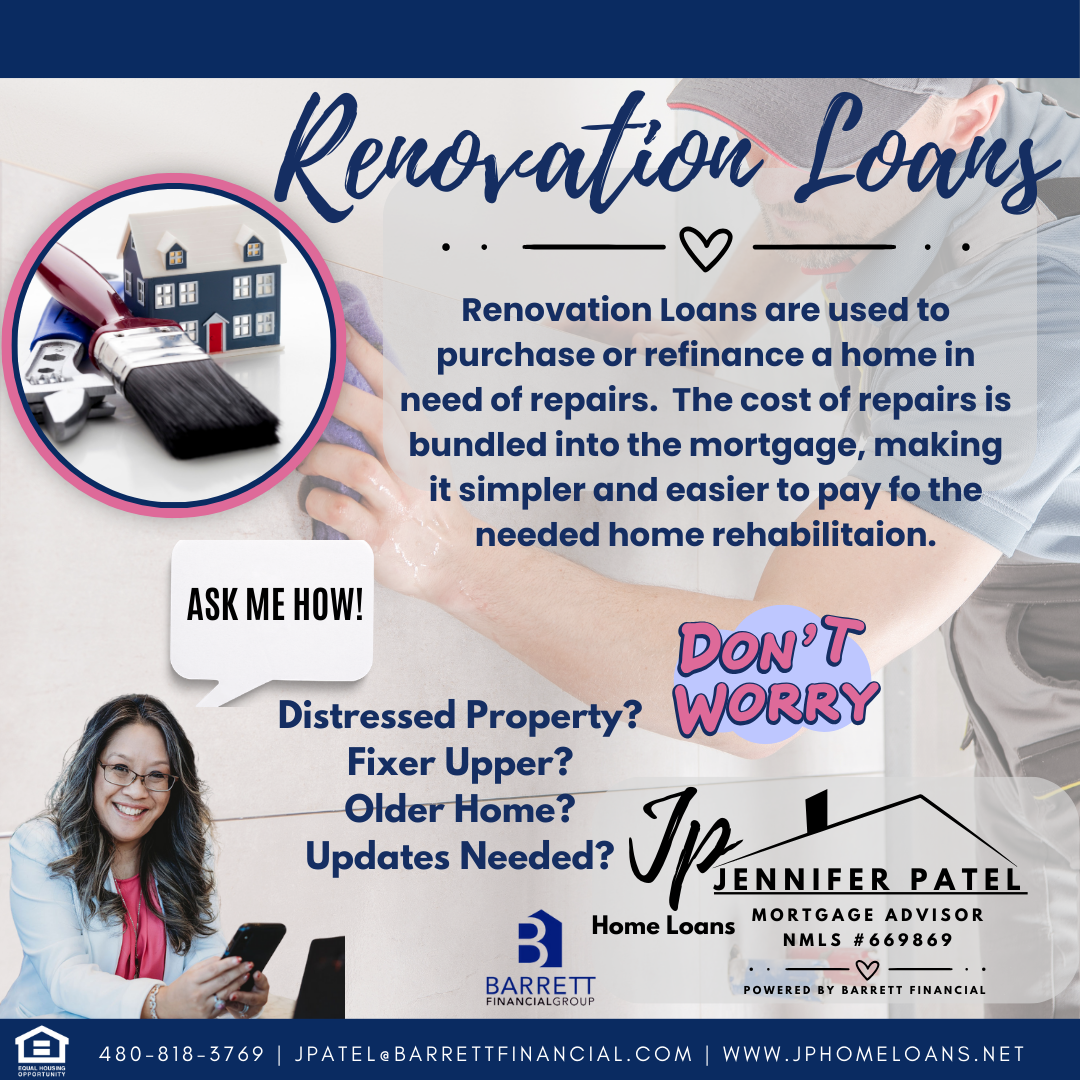Unlocking Your Dream Home with Renovation Loans
Are you dreaming of a home that fits your needs but requires some repairs or upgrades? Whether you're purchasing a new home or refinancing your current property, a renovation loan could be the perfect solution. This type of loan allows you to combine the cost of purchasing or refinancing a home with the price of necessary repairs and improvements, all into one mortgage. This way, you don’t need to secure separate funding for your home improvements! It's an ideal way to make your dream home a reality without the stress of juggling multiple payments.
In some cases, if the property is uninhabitable during renovations, you can even finance up to six months of your mortgage payment. This helps alleviate the stress of managing two payments while your home is under construction.
How Does a Renovation Loan Work?
Renovation loans let you borrow against the projected value of the home after renovations, not its current condition. For example, let's say the Jones family finds their ideal home for $250,000, but the home needs $50,000 in repairs. With a renovation mortgage, they could finance the entire $300,000 purchase price and repair costs into one loan, saving both money and time.
If you're purchasing a new home, you can secure a loan that includes the cost of necessary upgrades and repairs right from the start. For current homeowners, refinancing with a renovation loan allows you to upgrade your space without worrying about a large upfront cost.
You could finance up to 95-97% of the total loan amount depending on the loan program, so you’ll have more flexibility to make your dream home a reality without draining your savings.
What Types of Homes May Benefit from Reno Loans?
Renovation loans aren’t just for newly built homes – they work on a wide range of properties, including:
Distressed Properties: Homes that were in foreclosure or short sales and have been neglected may need substantial repairs.
Fixer-Uppers: Homes requiring major renovations or structural repairs can benefit from a renovation loan to make them livable.
Older Homes: If you own an older home in need of upgrades, like adding space or improving energy efficiency, a renovation loan can help modernize your property.
Homes for Disabled or Elderly: Renovations to make your home more accessible (like adding a wheelchair ramp or installing grab bars) can be financed with a renovation loan.
Pros and Cons of Renovation Loans
Pros:
One Loan for Purchase and Repairs: A renovation loan lets you bundle your home purchase or refinance with the cost of repairs, eliminating the need for separate financing.
Increased Home Value: By financing improvements upfront, you’re increasing the home’s value, which could benefit you in the long term when you sell.
More Loan Flexibility: Renovation loans are based on the future value of the home, not its current condition, giving you the ability to borrow more and finance your dream home.
No Need for Separate Funding: Rather than paying for renovations out of pocket or using credit cards, you can finance it all with one mortgage.
Helps with Uninhabitable Homes: If the property is not livable during renovations, you can finance up to six months of mortgage payments, making the process smoother for you and your family.
Variety of Programs Available: There are multiple renovation loan programs to fit different needs, from FHA and VA loans to conventional options, each with varying terms and requirements.
Cons:
Longer Loan Process: Since renovation loans require more documentation and planning, the approval and closing process can take longer than a typical home loan.
Upfront Costs: While you can finance the repairs, some renovation loans require you to pay certain costs upfront, such as a home inspection or contractor fees.
Additional Paperwork: There’s more paperwork involved to outline the scope of the renovation project and get approval for the repairs you plan to make.
Limited Eligibility for Repairs: Not all types of repairs are eligible for financing. Cosmetic updates may be allowed, but major structural changes or high-cost luxury upgrades might not qualify.
Higher Interest Rates: Depending on the loan program, renovation loans may have slightly higher interest rates compared to traditional home loans or refinances.
Construction Delays: Renovation projects can sometimes go over budget or take longer than expected, which could cause delays in your timeline or increase costs.
Popular Renovation Loan Programs
There are several loan options depending on your needs:
FHA Standard 203(k) Rehabilitation Loan: For homes needing more than $5,000 in repairs.
FHA Limited 203(k) Rehabilitation Loan: Ideal for homes needing repairs totaling up to $35,000.
FHA Repair Escrow 203(b): For homes purchased directly from HUD needing cosmetic repairs (up to $10,000).
FHA, VA, and USDA One-Time Close: This program finances the construction, lot purchase, and permanent loan for new homes.
Fannie Mae Homestyle Renovation Loan: A conventional loan with competitive rates for home upgrades.
VA Renovation Loan: For veterans who need minor cosmetic repairs with the added benefit of VA loan features.
Is a Renovation Loan Right for You?
Whether you're buying your dream home or upgrading your current property, a renovation loan can give you the flexibility to create a space that suits your lifestyle. It’s a perfect option for new home purchases, as it allows you to transform a property into your ideal living space without additional stress. If you're ready to get started or want to explore your options, contact me today to learn more about the best renovation loan program for your needs.







